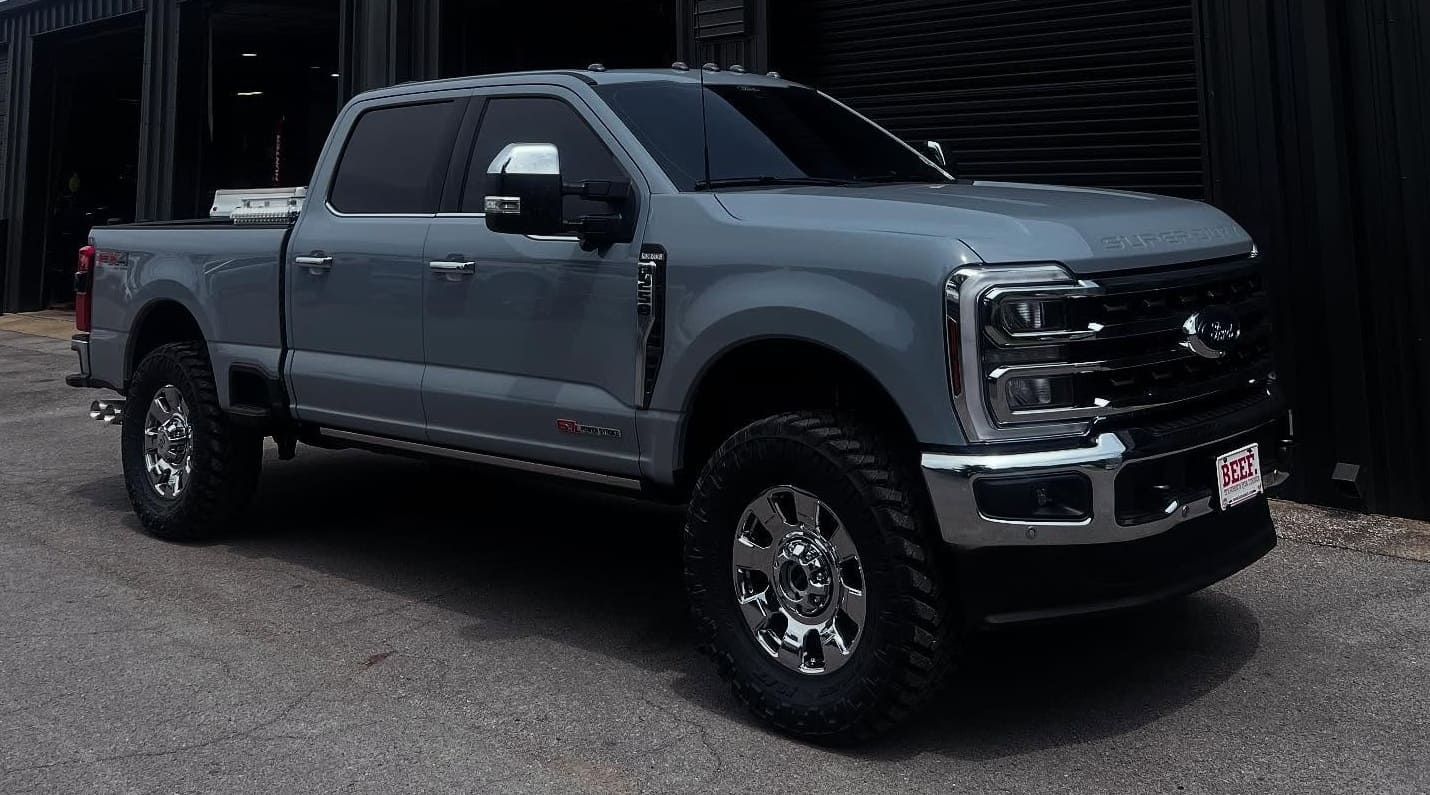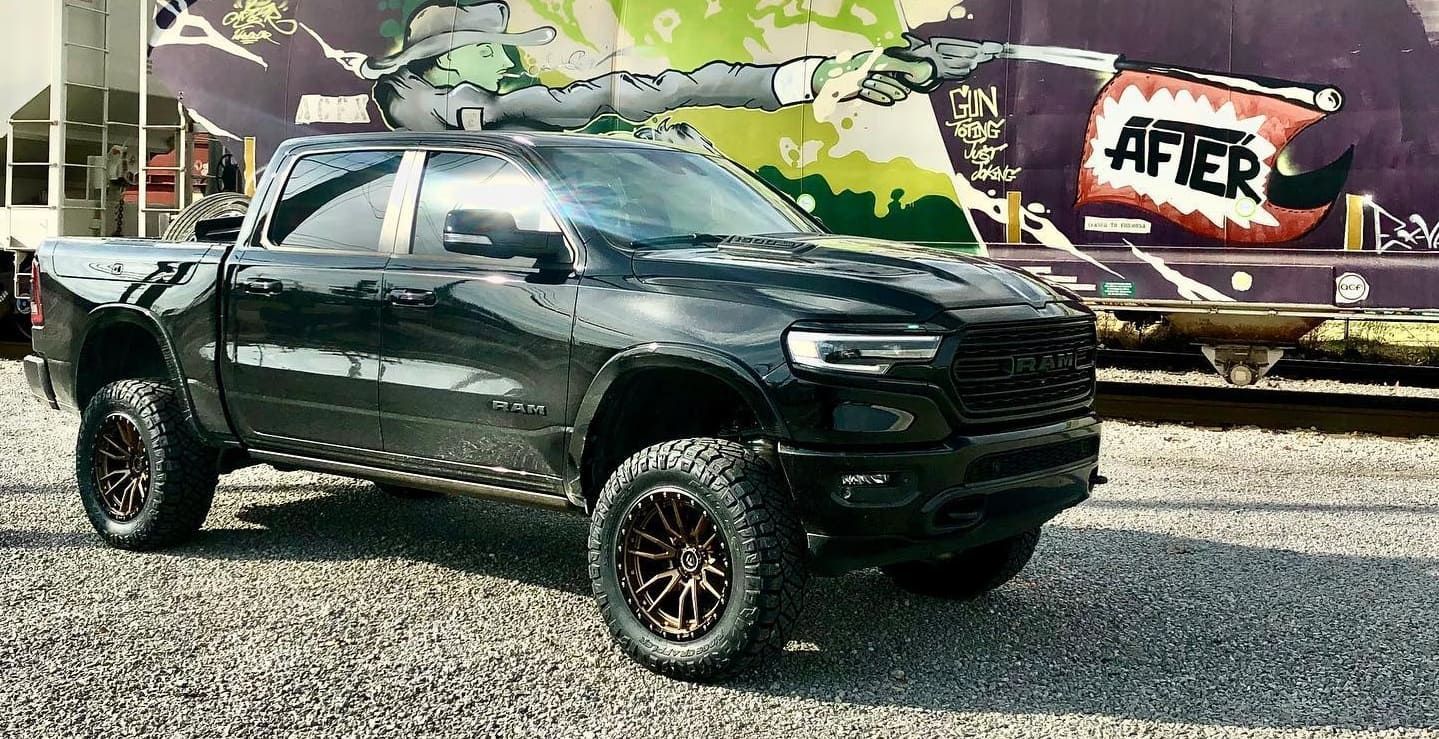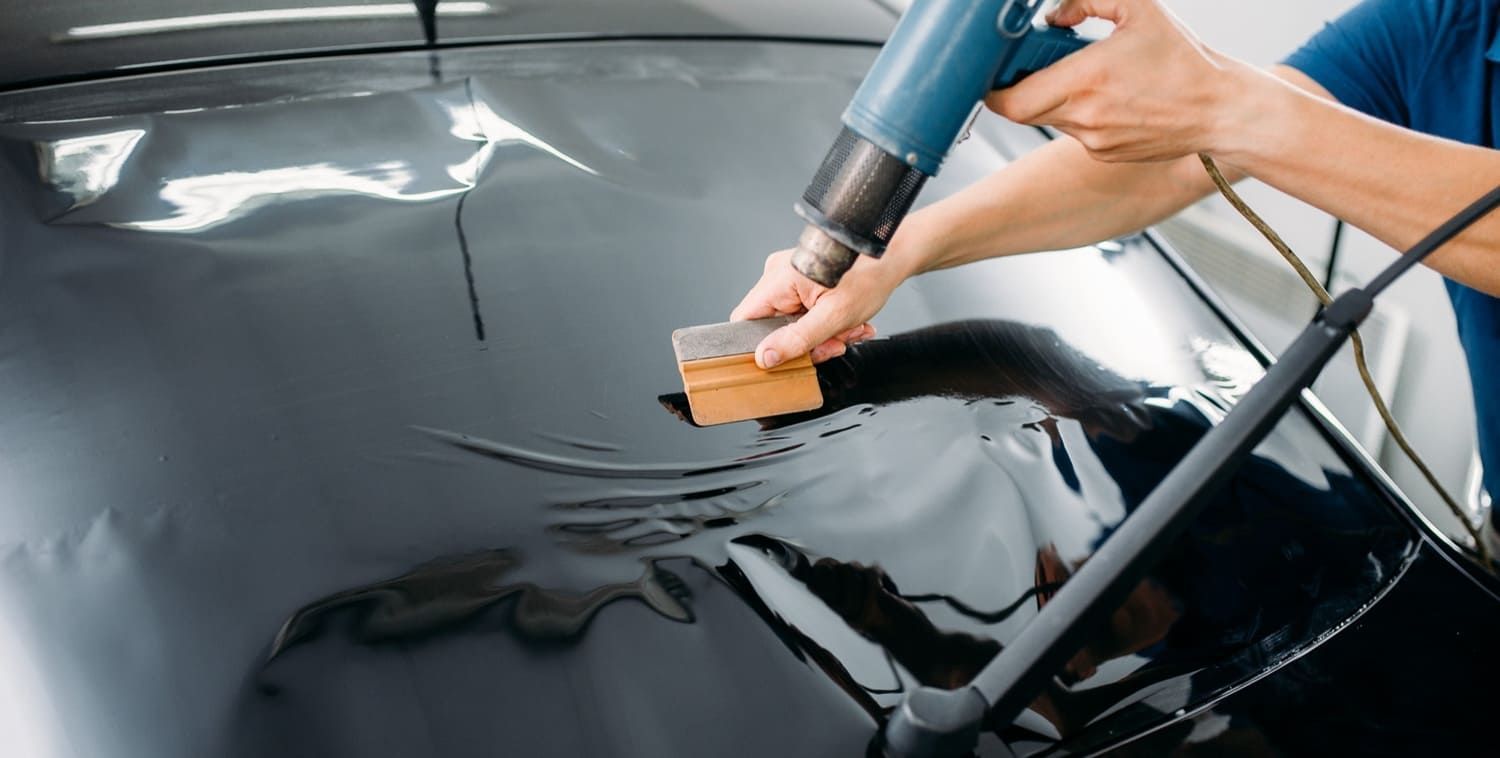Is Ceramic Tint Worth the Extra Cost?
Choosing the right window tint for your car can be a daunting task. With so many options available, it's easy to feel overwhelmed. Ceramic tint is often touted as a premium choice. But is it worth the extra cost?
Ceramic tint offers several advantages over traditional tints. It provides superior UV protection, heat reduction, and glare minimization. These benefits can enhance your driving experience and protect your vehicle's interior.
However, the cost of ceramic tint is higher than other options. This raises the question: do the benefits justify the investment? In this article, we'll explore the ceramic tint cost benefits and help you decide if it's the right choice for you.

What Is Ceramic Tint? An Overview
Ceramic tint is a type of window film known for its high performance. Unlike standard tints, it doesn't use dyes or metals. This makes it a unique and effective solution for car windows.
The film contains nano-ceramic particles that block heat and UV rays. These particles are so small that they are invisible to the naked eye. This allows the tint to maintain clarity while providing protection.
Here are some key features of ceramic tint:
- Blocks up to 99% of UV rays
- Reduces heat inside the vehicle
- Does not interfere with signals
The film is popular among car enthusiasts for its durability. Unlike other tints, it does not fade over time. This makes ceramic tint a long-lasting investment for vehicle owners seeking quality.
How Does Ceramic Tint Work?
Ceramic tint is crafted with advanced technology to maximize protection. This tint uses nano-ceramic particles to effectively block heat and UV rays. The particles are non-metallic, ensuring no interference with your electronic devices.
Here's how it works:
- Heat Rejection: Blocks infrared light, reducing interior heat.
- UV Protection: Filters out harmful UV rays, safeguarding skin and interior.
- Signal Integrity: Maintains signal clarity for devices like GPS and radios.
These features allow ceramic tint to provide substantial benefits. It ensures a comfortable and safe driving experience, even in bright sunlight. The technology behind it keeps vehicles cool and protected, making it a great option for drivers.
Ceramic Tint Advantages: What Sets It Apart?
Ceramic tint offers several advantages over other tint options. Its ability to provide excellent UV protection stands out the most. By blocking up to 99% of harmful rays, it helps to protect both your skin and your car's interior.
Another key advantage is heat reduction. By reflecting and absorbing infrared light, ceramic tint significantly cools the car's interior. This means you can enjoy a more comfortable ride without cranking up the air conditioning.
Ceramic tint also excels in reducing glare from the sun and headlights. Improved visibility enhances driving safety and reduces eye strain.
Let's not forget about privacy. Ceramic tint offers enhanced privacy without making the windows look overly dark.
Here's a quick list of its core benefits:
- Durability: Lasts longer and resists fading.
- Electronics Safety: Non-metallic, ensuring no interference with electronic signals.
Additionally, the aesthetics of ceramic tint can elevate your vehicle's appearance. It provides a sleek, modern look that many car owners find appealing.
Here's another notable list:
- Environmental Benefits: Reduces reliance on air conditioning.
- Resale Value Boost: Potentially increases the car's market value.
Overall, ceramic tint is a worthwhile investment. It offers a combination of protection, comfort, and style that is unmatched by other tinting solutions.
Comparing Ceramic Tint to Other Window Tints
When it comes to window tinting, ceramic tint stands out. Yet, it's important to compare it with other popular tints. The most common alternatives include dyed, metallic, and carbon tints.
Dyed tint is the most affordable option. It simply relies on layers of dye to block sunlight. However, it offers the least UV protection and tends to fade over time. Metallic tint, on the other hand, reflects heat effectively. But it can interfere with electronic signals, affecting devices like GPS and mobile phones.
Carbon tint offers a more advanced solution with improved heat and UV protection. It doesn’t interfere with signals, but it’s less effective than ceramic tint in terms of heat reduction.
Here’s how they compare in key areas:
- Cost: Dyed < Carbon < Metallic < Ceramic
- Durability: Ceramic > Carbon > Metallic > Dyed
- Signal Interference: Metallic causes issues; others don’t.
Ceramic tint, while more costly, delivers superior performance. Its benefits often justify the extra expense for many car owners.
Ceramic Tint Cost: What to Expect
Investing in ceramic tint comes with a higher price tag. On average, you may expect to pay $400 to $800 for professional installation. Factors like vehicle size and location can impact costs too.
Some costs break down into material and labor. The material itself is premium, contributing to the overall price. Professional installation ensures quality results, preventing issues like bubbling or peeling.
When exploring pricing, consider these potential cost factors:
- Type of Vehicle: Larger vehicles generally cost more.
- Location: Urban areas often have higher labor rates.
- Installer Reputation: More experienced professionals might charge a premium.
While ceramic tint costs more upfront, it promises longevity and superior performance. With proper care, it offers long-term value. Many car owners find the initial investment worthwhile given the enhanced benefits. Before deciding, it's wise to obtain quotes from multiple providers to gauge a fair price.
Ceramic Tint Cost Benefits: Is It Worth the Investment?
Ceramic tint offers a host of benefits that justify its higher cost. It provides exceptional protection against UV rays, safeguarding your skin and preventing interior fading. This can lead to savings by delaying the need for interior refurbishments.
Moreover, ceramic tint significantly reduces heat inside your vehicle. This improved thermal control can lessen the need for air conditioning. Consequently, it potentially decreases fuel consumption, leading to savings over time.
Here are key cost-saving advantages of ceramic tint:
- UV Protection: Guards upholstery and car interiors.
- Heat Reduction: Lowers cooling demands, saving on fuel.
Additionally, the durability of ceramic tint makes it a cost-effective solution in the long term. Its resistance to fading and deterioration ensures that it will serve effectively year after year, minimizing maintenance expenses.
Consider these long-term cost benefits:
- Durability: Avoids frequent replacements.
- Aesthetic Longevity: Maintains its look without fading.
Ultimately, ceramic tint is a smart financial decision. Its ability to enhance comfort and protect your investment over its lifespan makes the upfront cost worthwhile for many car owners. Thus, the investment in ceramic tint can indeed be justified by its enduring benefits.

Factors That Affect Ceramic Tint Pricing
Several factors influence the pricing of ceramic tint. The size and type of your vehicle can impact installation costs. Larger vehicles require more film and labor, which increases the price.
Additionally, the brand and quality of the ceramic tint play a role in cost variations. Premium brands often use advanced technology that can drive up the price.
Location also significantly impacts the cost. Areas with high demand for tinting services might have higher prices. Here are some factors that can affect pricing:
- Vehicle Size and Type
- Brand and Quality of Tint
- Geographic Location
Professional vs. DIY Installation: What’s Best?
Choosing between professional and DIY installation depends on your skill level and priorities. Professional installation ensures high-quality results, as experts have the experience and tools needed. This approach minimizes the risk of bubbles and misalignment.
DIY installation, on the other hand, can save money if you're confident in your skills. However, without proper tools and preparation, the results might not meet expectations. Issues like bubbling and improper adhesion are common DIY mistakes.
Ultimately, professional installation usually offers warranties and guarantees, providing peace of mind. Consider these points when deciding:
- Expertise and Tools
- Cost and Budget
- Quality and Warranty
How to Find Quality Car Window Tinting Near Me
Finding reliable car window tinting services near you requires research. Start by asking friends and family for recommendations. Personal experiences often lead to trustworthy services.
Next, check online reviews and ratings to see customer feedback. Websites like Yelp and Google Reviews can guide your decision.
Compare services based on:
- Reputation and Experience
- Customer Reviews
- Service Costs
Visiting shops in person also helps assess professionalism and quality of work. Choose a service that balances cost with quality for the best results.
Frequently Asked Questions About Ceramic Tint
Ceramic tint brings forth many questions from interested car owners. Here's a quick FAQ to clarify common doubts.
What makes ceramic window tint more expensive than other types?
Ceramic tint uses advanced, non-metallic nano-ceramic particles that block heat, UV rays, and glare without compromising visibility. This technology costs more to produce but offers superior performance and longevity compared to dyed or metallic films.
Does ceramic tint really reduce heat better?
Yes. Ceramic window tint can block up to 80% of infrared heat, helping keep your car cooler, especially in hot climates. It offers higher thermal rejection than dyed or metalized tints, making it ideal for Florida drivers or anyone who wants maximum comfort.
Will ceramic tint interfere with electronics or GPS?
No. Unlike metallic tints, ceramic window tint is signal-friendly. It won’t block GPS, cell phone signals, radio reception, or Bluetooth, making it a smart choice for modern vehicles with connected features.
Is ceramic window tint legal in all states?
Ceramic tint is legal as long as the film’s visible light transmission (VLT) complies with your state’s tint laws. You can choose from a range of legal shades that deliver the performance of ceramic while staying within legal limits.
How long does ceramic tint last?
High-quality ceramic window films can last 10+ years or even the life of the vehicle. They’re designed to resist fading, bubbling, and discoloration better than cheaper tints, making them a smart long-term investment.
Is the investment in ceramic tint really worth it?
If you prioritize heat rejection, UV protection, signal clarity, and longevity, ceramic tint offers unmatched value over time. You’ll save on fuel from reduced AC use, preserve your interior, and enjoy a more comfortable drive year-round.
Where can I get professional ceramic tint installation near me?
For expert ceramic tint installation using top-tier film options, trust Full Throttle Custom Automotive. Call us at (615) 449-8468 to schedule a free consultation or request a quote today. We’ll help you decide if ceramic tint is the right upgrade for your vehicle.
Understanding these aspects helps you make an informed decision.
Final Verdict: Is Ceramic Tint Worth the Extra Cost?
The benefits of ceramic tint go beyond basic window tinting. Its UV protection and heat reduction keep your car comfortable and safe.
Though pricey, many find ceramic tint a worthy investment. It enhances vehicle longevity and adds value. Users appreciate its durability and non-interference with electronics. Choosing ceramic tint is choosing quality.
For those who prioritize comfort and protection, ceramic tint is a smart choice. Its long-term advantages outweigh the initial cost, making it an appealing option for many car enthusiasts. Contact Full Throttle Custom Automotive, premier window tinting installers serving Lebanon, TN, for a free estimate today.













